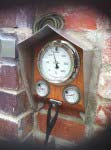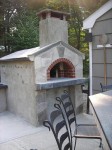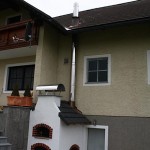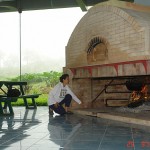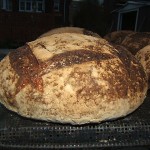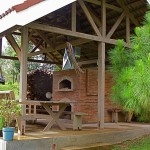back to board Main Page
About concrete / cement
From the WFO board
Posted by Greg Peterson on June 26, 2004 at 15:45:06:
Cement cures. It can even cure underwater. The speed with which it cures affects the strength of the finished cement - slower time rate is better.
Keeping a slab wet while it cures slows the curing process so that the slab is strong. It is good to cure cement slowly, at least keep it moist for 24 hours by sprinkling water onto its surface, and covered if how or windy outside. If you let a slab dry immediately after pouring, it will cure quickly and will be very weak (often developing cracks). Mixing cement with too much water will also make the final product weak - you want just enough water to be able to work the cement, and not so much that the cement appears wet.
Cement with aggregate is called concrete. Different concrete mixes will give you different characteristics of the final product.
You already mention this, when using metal reinforcement within a concrete form (or slab) it is important that the entirety of the metal is embedded in the concrete - in other words no part of the metal sticks out, or sticks into the earth. Any metal sticking out will rust, and will eventually rust into the slab and weaken the entire slab.
Concrete, cement curing or drying and reinforcing steel application.

Jamie and Katrina's brick oven with temperature gauge, in Victoria.
Concrete blocks used for the oven’s outer walls. By Joe in Connecticut USA
Wood fired family oven and chimney project by Robert in Austria
My oven with fireplace, cook food and heat water, by Joel in Philippines
Baking sourdough breads in quantity in Canada
Pizza oven and hut built by Tony in Philippines
